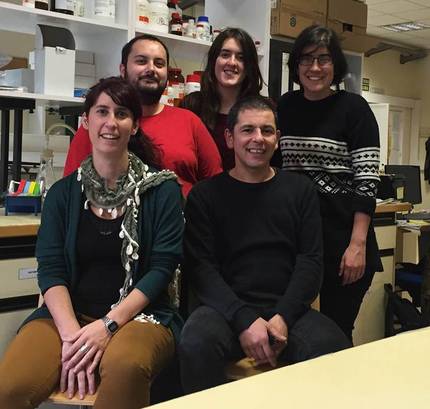Researchers of the UPV-EHU celiac disease

Researchers at the University of the Basque Country have discovered several genes related to celiac disease by applying a new methodology for genomic data analysis. Changes have also been detected in the expression of some of these genres.The work has been published in the journal European Journal of Human Genetics, the department of Genetics, Physical Anthropology and Animal Physiology of the UPV and the department of Pediatrics of the Cruces University Hospital.
The starting point was a deep study conducted about five years ago by an international team of researchers. This study analyzed the genomes of almost 25,000 people from 8 countries and found different regions and new genes related to celiac disease. But the UPV researchers suspected that these data could contribute much more. “When you study almost 25,000 people, genetic diversity can be very large,” explains the director of the work, Koldo Garcia. “If there is too much diversity, there is too much noise and some variants related to the disease can be hidden.”
Thus, they thought that the key might be that the study was done taking into account the genetic proximity. “By groups of others more genetically similar, the signals can be clearer,” explains García. These data were authorized and reviewed in this way. Thanks to this, they have found more new regions and genes related to celiac disease. “What is most striking is a large part of the second chromosome, in which there are 11 genes.”

In addition, through biopsies, they have confirmed that the expression of six or seven of these 11 genes varies with the disease. One of them is the lactase gene. It was known that when celiacs are sick they have problems doubling milk, but when they stop taking gluten this problem disappears. In fact, they have seen that in celiacs not treated the degree of expression of the gene is very low and in the treatises it is normal. On the other hand, in the case of the other two genes have seen that, even after treating the disease, they do not return to normal level. “We believe that these genes have some error and that is why they are less expressed,” explains García.
In addition to the results obtained, García believes that it would be interesting to use the methodology used with other genetic diseases. “There are data for many diseases and new results can be obtained. It is good to reuse the data; on the one hand, research is more sustainable because it saves a lot and, on the other hand, with new eyes, you can get nice things. As researchers, we have to think about how to review the data we have.”
Buletina
Bidali zure helbide elektronikoa eta jaso asteroko buletina zure sarrera-ontzian











